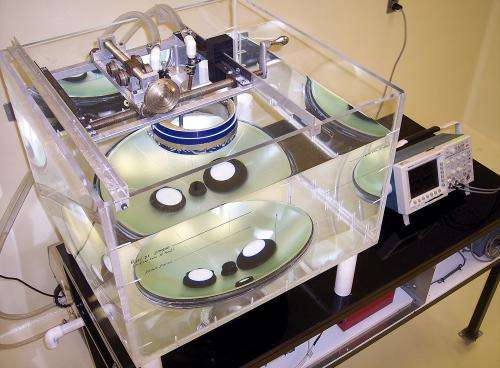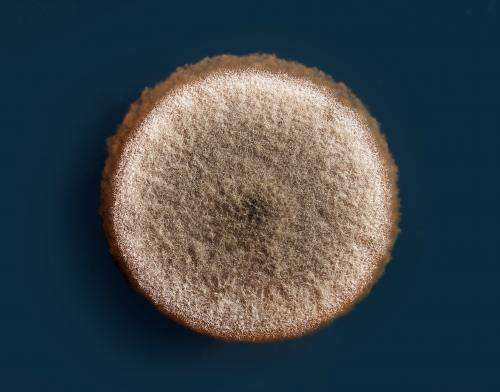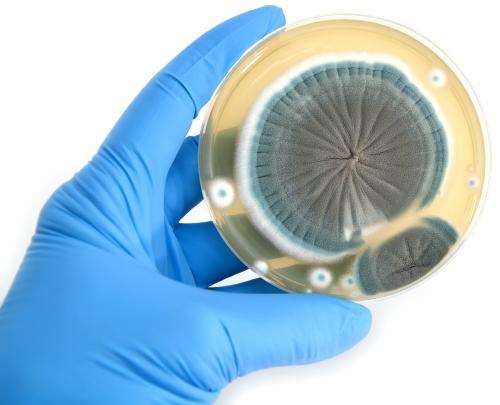By introducing DNA from other organisms, scientists enhance production of compounds in fungus

The enzymes and compounds produced by fungi are of great interest to the pharmaceutical, textile, paper and food industries. These organisms are capable of secreting, their nutritional needs are low and have high growth rate. A group of researchers from the National Autonomous University of Mexico (UNAM) and the Center for Research and Advance Studies from the National Polytechnic Institute (CINVESTAV) successfully managed to enhance such properties.
The team, led by Achim Loske Mehling, from the Center of Applied Physics and Advanced Technology (CFATA), and Miguel Gómez Lim, from the CINVESTAV, uses a method to transform fungi (by introducing DNA from other organisms) and results in a high percentage of the compounds they secrete.
"The technology consists of applying shockwaves to small vials containing fungi and DNA in suspension, which has proven to be extremely efficient," says Loske Mehling. He explains that the shock waves are pressure pulses produced by a generator to release a lot of energy in a very short space and time, something like a miniature explosion.
If we think of just a cell, the erosion caused by the microbubbles produces a pore, so any molecule that is in the fluid can enter inside. In this case it would be the genetic information. This is incorporated into the chromosome of the fungus.
According to the researcher, in different industrial sectors filamentous fungi (formerly called 'molds') have been used for many years. "Indeed, one of the main problems we had was regarding their genetic transformation, because although they naturally secrete enzymes, their efficiency is very low."
However, with the implementation of this unique technology, we increase their efficiency dramatically, which can be interesting for industries that faced this problem in the process of obtaining fungal compounds.

"We were able to prove that different species of fungi can assimilate the genetic information we desire. In fact, there are certain tests commonly used in molecular biology that assure us of it; we have also found that fungi produce the needed substances in much larger quantities," says the scientist at CFATA.
He highlights that the first results were obtained with four species of fungi. The first is called Aspergillus niger, which is used for the production of citric acid required by the global industry because, contrary to what one might expect, is not currently extracted from fruits such as lemon or orange.
The second, called Trichoderma reesei is used in the production of cellulase, an enzyme that is required by the paper industry due to its ability to decompose cellulose. The third fungus transformed by a shock wave was Phanerochaete chrysosporium to degrade lignin, a substance that appears in the tissues of woody plants and is also required for papermaking.

Finally, Fusarium oxysporum was transformed, a fungus that causes severe deterioration in the countryside. "By genetic modification, it loses its ability to cause damage; it also has the amazing ability to transform biomass from plants to ethanol. Needless to say, its importance in the generation of fuels for the future is undeniable, especially if with the treatment of shock waves we are able to increase its productivity" says Loske Mehling.
Currently, at the Laboratory of Shock Waves at CFATA more species of fungi continue to be transformed. They have patented the method, so Loske Mehling believes that everything is ready to transfer the technology to companies interested in the development.
Provided by Investigación y Desarrollo


















